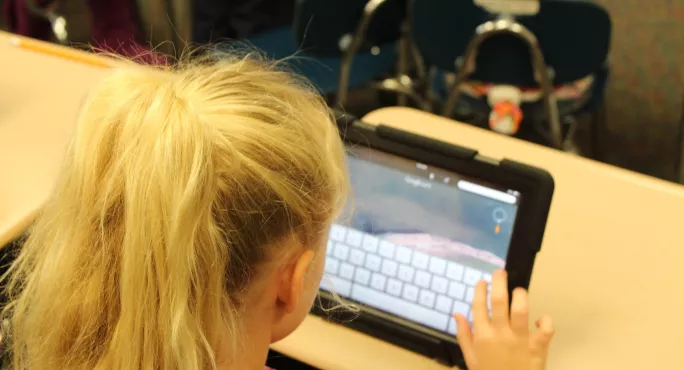- Home
- ‘Edtech has transformed education for our pupils with SEND’
‘Edtech has transformed education for our pupils with SEND’

At my school, we have 45 per cent of secondary students eligible for pupil premium and we have 56 per cent special educational needs and disability. And it’s edtech that’s helping us to ensure that the disadvantaged learners don’t slip through the net.
Cranbook is a blended-learning school: we combine traditional teaching methods with a range of edtech. This spans from devices and software for students, to resources and insights that help teachers better support disadvantaged learners.
At subject level, we’ve introduced numerous tools and platforms, often incorporating assessment. For example, in key stage 3 maths, each student receives an hour of online homework once a week. Algorithms ensure that this homework is personalised so they receive questions suited to their level of understanding. It adapts as students use it, making it harder or easier according to how they are doing.
Students receive instant feedback from their maths homework. Teachers can also see how a class is doing or drill down to individual students. This is especially helpful for supporting disadvantaged learners. Teachers can easily see how they’re developing, reinforcing positive progress and quickly correcting problem areas. Encouragingly, results show that disadvantaged learners are progressing as quickly as other students in maths. Partly as a result of this success, we’ve now moved all homework online.
Edtech: personalised learning
While edtech doesn’t eradicate direct instruction teaching, the insights it provides allow teachers to personalise each student’s experience. For instance, we now run extra maths sessions and other interventions based on test results. Teachers can also adopt a “focus first” approach. In other words, they can prioritise interventions for disadvantaged learners, ensuring that their needs are met.
To further support disadvantaged pupils, we also use a valuable piece of SEND and pupil-premium management software. At a glance, teachers can quickly access up-to-date information covering everything from work plans to pupil passports and student interventions. Because all this information updates live, and is accessible through the teacher’s browser, they always know which students require additional support. None of this would be possible without the data tools we use.
While having homework online is helpful, it needs a clear rewards system to be effective. This is particularly important for supporting disadvantaged students, who sometimes struggle to manage their commitments. Edtech helps here, too. We use an online system to manage pupil seating, homework diaries, rewards and sanctions. Students who submit homework on time get a house point. If they don’t, the system generates a detention for the next day (which is cancelled if they subsequently complete their homework).
While this is all managed online, it’s overseen by a behaviour support team and supported by class tutors. In short, all pupils (and parents, who also have access) know what needs doing, by when, and the consequences if they don’t. Interestingly, while high-attaining learners remain at a similar level, our disadvantaged students have improved attainment. This suggests that a clear system of rewards and sanctions, combined with effective learning tech, produces more engaged students.
So what advice would I offer to schools looking to better support disadvantaged students?
I’d recommend using a single online system for behaviour management, homework and seating plans. It’s beneficial to use student voice to help devise the rewards and sanctions categories for the system. It’s also important to create a clear homework timetable and to stick to it. Short, online assignments once a week are better than longer projects.
Finally, all students need access to devices. At Cranbrook we’ve invested in 120 laptops so that no student is left wanting. And behind all this tech, we run regular homework support sessions, overseen by staff with access to digital devices.
When it comes to tech in schools, many “buzzy” terms are banded around. Things like “artificial intelligence” and the “fourth industrial revolution”. When people ask me about the future, I certainly don’t envisage robot teachers. But with automation rendering time-consuming tasks (like marking) obsolete, and data analytics giving teachers unrivalled insights, the main benefit of edtech has been to give teachers more freedom.
Teaching itself cannot be automated. It is personal, not one-size-fits-all. And teachers can now do what they love - help students to discover the joy of learning. And they can split their time more effectively between disadvantaged students and others. Having opened in 2015, Cranbrook has been lucky to incorporate technology from the start. But what I think we can demonstrate is that disadvantaged pupils - far from getting left behind by technology - are actually set to gain from it.
Stephen Farmer is head of Cranbrook Education Campus in Devon, which uses Sparx to support maths learning. He tweets at @StephenFarmer.
Keep reading for just £1 per month
You've reached your limit of free articles this month. Subscribe for £1 per month for three months and get:
- Unlimited access to all Tes magazine content
- Exclusive subscriber-only stories
- Award-winning email newsletters
